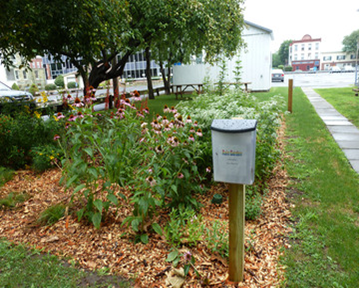What is green infrastructure? At the landscape scale, green infrastructure is the patchwork of natural areas that provide habitat, flood protection, clean air, and clean water. At a site scale, green infrastructure is an approach to managing stormwater that mimics the natural water cycle by keeping water where it falls. Green Infrastructure uses plants, soil, and landscape design to absorb, filter and disperse stormwater. Examples of green infrastructure can be found at multiple sites throughout Ulster County.
Why do we need green infrastructure? Green infrastructure mitigates flooding and reduces runoff. Flooding occurs when rainfall or snowmelt overwhelms stormwater infrastructure. In cities, impervious surfaces (those that do not absorb water), such as roofs and pavement, increase the likelihood of flooding. Runoff is water that runs from the surface of the land into bodies of water rather than evaporating or being absorbed into the ground. Runoff often collects pollutants as it flows. Impervious surfaces increase the amount of runoff and runoff pollution. This runoff flows untreated into our waterbodies.
Combined Sewer Overflow: In Kingston, as in many older cities, portions of the stormwater and sewage systems are combined. This means that stormwater and sewage flow through the same pipes to reach the sewage treatment plant. When rainfall or snowmelt causes the combined systems to overflow, both stormwater and untreated sewage are discharged into the Rondout Creek.
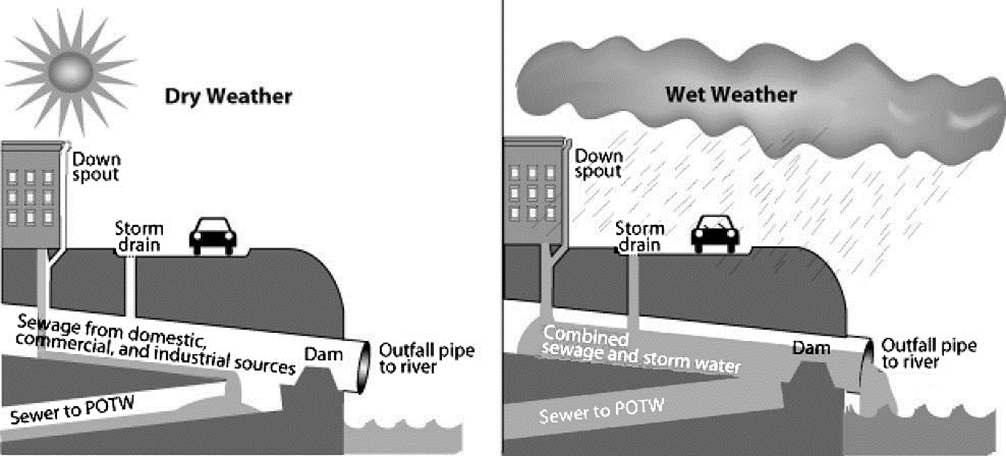
Benefits of Green Infrastructure: Green infrastructure helps to prevent flooding, runoff pollution, and combined sewer overflow by absorbing and filtering stormwater through the ground, minimizing the amount of water that floods the streets or enters the sewer system. The natural elements such as flowers, shrubs, and trees are beautiful and serve as habitats for local insects, birds, and other wildlife. Site scale green infrastructure can link habitats to the larger natural landscape.
Types of Green Infrastructure: Green infrastructure includes a variety of practices such as rain gardens, green roofs and walls, pervious pavement, and bioretention areas.
-EXAMPLES OF SITE SCALE GREEN INFRASTRUCTURE PROJECTS IN ULSTER COUNTY-
Bioretention Areas- UC Office Building Complex: Bioretention areas are depressed areas in the landscape that are designed to collect and filter stormwater. The trees, shrubs, and grasses planted in these areas must be able to survive both flooding and drought. Native perennials such as milkweed, mountain mint, coneflower, and beebalm are well suited for this and require minimal maintenance. This bioretention area is at the Ulster County Office Complex. It was designed to collect runoff from the adjacent parking lot and reduce flooding on Pearl Street.
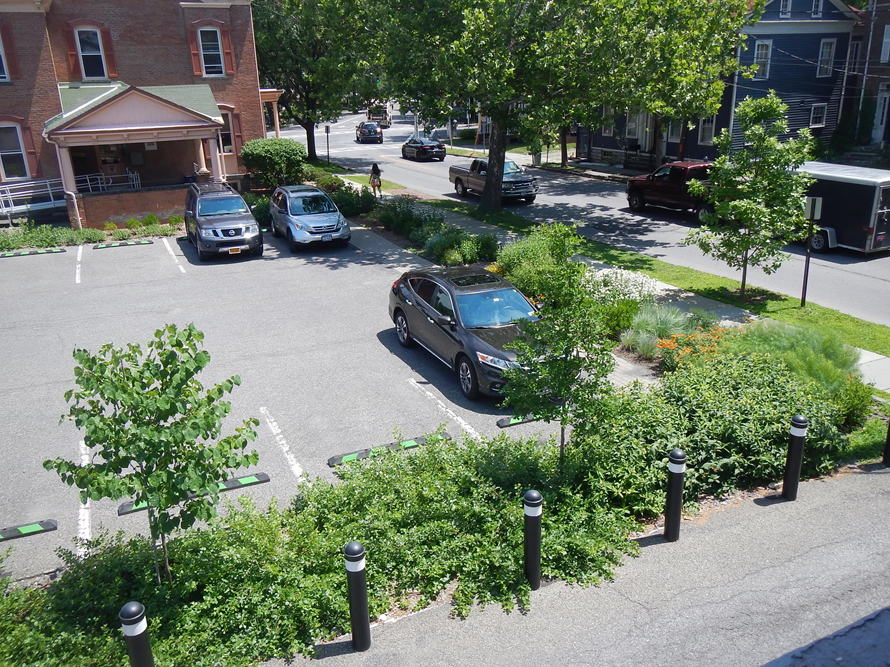
Pervious Pavement– STRIVE Project at KCSU: Pervious means “allowing water to pass through.” Pervious pavement allows stormwater to pass through the surface, reducing flooding and runoff, capturing pollutants, and filtering water. At Kingston Center of SUNY Ulster (KCSU), 12,000 sq. ft. of porous asphalt was installed. Porous asphalt often looks just like regular blacktop …until it rains! This picture shows pervious and impervious pavement at KCSU. It is clear that water is pooling on the impervious pavement while pervious pavement allows water to infiltrate.
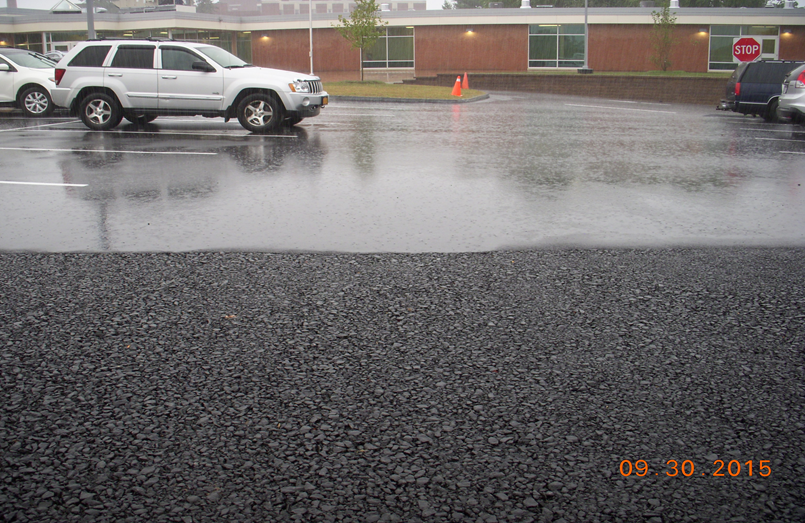
Green Walls– STRIVE Project at KCSU: Green walls are walls that are made of living plants. Green walls absorb heat from the sun, naturally cooling buildings, clean the air, and absorb rain water. KCSU uses a green wall to conceal a maintenance area, creating a more visually pleasing campus. This green wall was planted with hardy perennials. On the northwestern wall, shade-loving heuchera is planted. The southwestern wall is planted with catmint, a native perennial that attracts pollinators, as well as a mix of drought-resistant, sun-loving sedum.
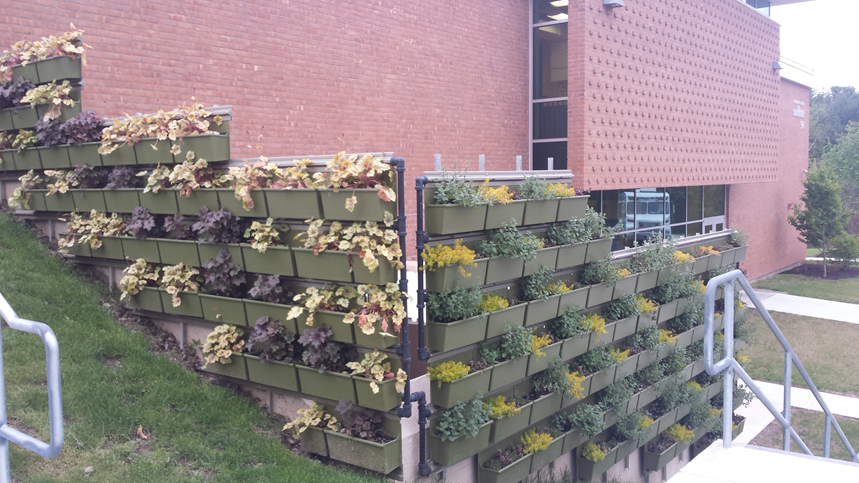
Rain Gardens– UC Department of the Environment: Rain gardens are simple bioretention areas that collect and filter stormwater. They can be built in residential areas to collect water from roofs and gutters. Rain gardens enhance the landscape with native plants and provide habitat for wildlife. This rain garden at the Ulster County Department of the Environment serves as a demonstration site. The Department is housed in an older home with a small yard, similar to many other homes in Kingston.
